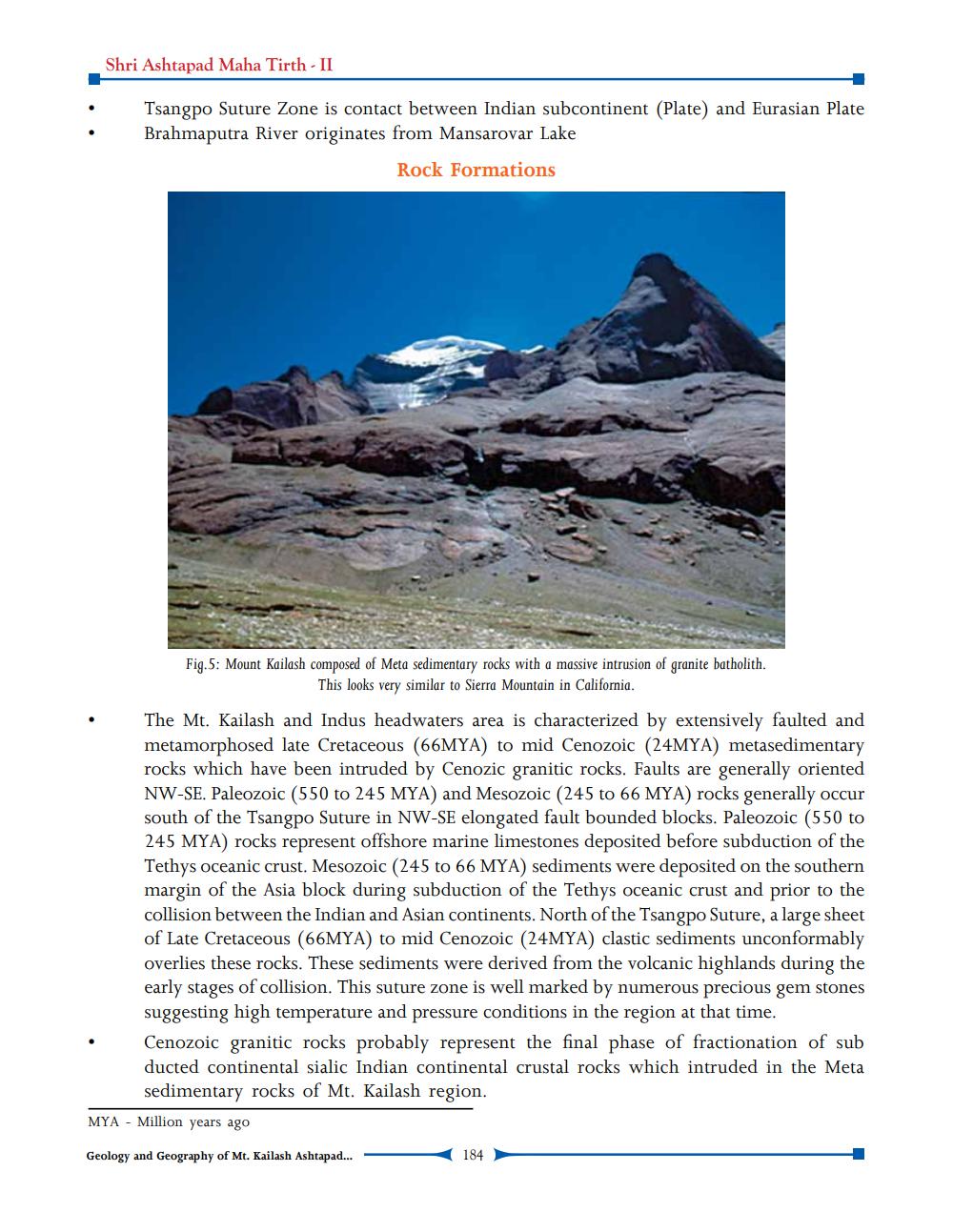________________
Shri Ashtapad Maha Tirth - II
Tsangpo Suture Zone is contact between Indian subcontinent (Plate) and Eurasian Plate Brahmaputra River originates from Mansarovar Lake
Rock Formations
Fig.5: Mount Kailash composed of Meta sedimentary rocks with a massive intrusion of granite batholith.
This looks very similar to Sierra Mountain in California.
The Mt. Kailash and Indus headwaters area is characterized by extensively faulted and metamorphosed late Cretaceous (66MYA) to mid Cenozoic (24MYA) metasedimentary rocks which have been intruded by Cenozic granitic rocks. Faults are generally oriented NW-SE. Paleozoic (550 to 245 MYA) and Mesozoic (245 to 66 MYA) rocks generally occur south of the Tsangpo Suture in NW-SE elongated fault bounded blocks. Paleozoic (550 to 245 MYA) rocks represent offshore marine limestones deposited before subduction of the Tethys oceanic crust. Mesozoic (245 to 66 MYA) sediments were deposited on the southern margin of the Asia block during subduction of the Tethys oceanic crust and prior to the collision between the Indian and Asian continents. North of the Tsangpo Suture, a large sheet of Late Cretaceous (66MYA) to mid Cenozoic (24MYA) clastic sediments unconformably overlies these rocks. These sediments were derived from the volcanic highlands during the early stages of collision. This suture zone is well marked by numerous precious gem stones suggesting high temperature and pressure conditions in the region at that time. Cenozoic granitic rocks probably represent the final phase of fractionation of sub ducted continental sialic Indian continental crustal rocks which intruded in the Meta sedimentary rocks of Mt. Kailash region.
MYA - Million years ago
Geology and Geography of Mt. Kailash Ashtapad...
184




